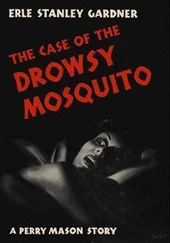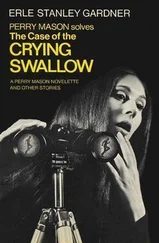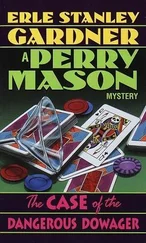Daniel Gardner - The Science of Fear
Здесь есть возможность читать онлайн «Daniel Gardner - The Science of Fear» весь текст электронной книги совершенно бесплатно (целиком полную версию без сокращений). В некоторых случаях можно слушать аудио, скачать через торрент в формате fb2 и присутствует краткое содержание. ISBN: , Издательство: Penguin Group (USA) Incorporated, Жанр: Психология, Политика, Прочая научная литература, на английском языке. Описание произведения, (предисловие) а так же отзывы посетителей доступны на портале библиотеки ЛибКат.
- Название:The Science of Fear
- Автор:
- Издательство:Penguin Group (USA) Incorporated
- Жанр:
- Год:неизвестен
- ISBN:9780525950622
- Рейтинг книги:3 / 5. Голосов: 1
-
Избранное:Добавить в избранное
- Отзывы:
-
Ваша оценка:
- 60
- 1
- 2
- 3
- 4
- 5
The Science of Fear: краткое содержание, описание и аннотация
Предлагаем к чтению аннотацию, описание, краткое содержание или предисловие (зависит от того, что написал сам автор книги «The Science of Fear»). Если вы не нашли необходимую информацию о книге — напишите в комментариях, мы постараемся отыскать её.
The Science of Fear — читать онлайн бесплатно полную книгу (весь текст) целиком
Ниже представлен текст книги, разбитый по страницам. Система сохранения места последней прочитанной страницы, позволяет с удобством читать онлайн бесплатно книгу «The Science of Fear», без необходимости каждый раз заново искать на чём Вы остановились. Поставьте закладку, и сможете в любой момент перейти на страницу, на которой закончили чтение.
Интервал:
Закладка:
95: “. . . mattered less than the profile.” Kahneman and Tversky dubbed this “base-rate neglect.”
99: “. . . more about the power of Gut-based judgments than they do about cancer.” For a good overview, see Atul Gawande, The Cancer-Cluster Myth, The New Yorker, February 8, 1998.
CHAPTER SIX
109: “. . . go along with the false answers they gave.” Robert Baron, Joseph Vandello, and Bethany Brunsman, The Forgotten Variable in Conformity Research: The Impact of Task Importance on Social Influence, Journal of Personality and Social Psychology 71:915-927.
111: "The correct rule is actually ‘any three numbers in ascending order.’ ” There are other rules that would also work. What matters is simply that the rule is not “even numbers increasing by two.”
112: “. . . more convinced that they were right and those who disagreed were wrong.” Charles Lord, Lee Ross, and Mark Lepper, Biased Assimilation and Attitude Polarization: The Effects of Prior Theories on Subsequently Considered Evidence, Journal of Personality and Social Psychology, 1979.
113: “. . . when they processed neutral or positive information.” See D. Westen, The Political Brain: The Role of Emotion in Deciding the Fate of the Nation , Public Affairs, New York, 2007.
118: "... illicit drugs aren’t as dangerous as commonly believed . . .” A thorough discussion of the real risks of drugs is outside the scope of this book, but readers who wish to pursue it are encouraged to read Jacob Sullum’s Saying Yes .
118: “. . . drug education as ‘superficial, lurid, excessively negative. . . .” Why have you never heard of this report? Because the government of the United States successfully buried it. In a May 1995 meeting, according to the WHO’s records—and confirmed to me by a WHO spokesman—Neil Boyer, the American representative to the organization, “took the view that . . . (the WHO’s) program on substance abuse was headed in the wrong direction . . . . if WHO activities relating to drugs failed to reinforce proven drug-control approaches, funds for the relevant programs should be curtailed.” Facing a major loss of funding, the WHO backed down at the last minute. Although a press release announcing the report was issued, the report itself was never officially released. The author has a copy on file.
119: “Higher perceived risk is always better.” See, for example, the Web site of the U.S. Office of National Drug Control Policy (www.whitehousedrugpolicy.gov ), where documents routinely tout higher risk perceptions as evidence of success but seldom consider whether those perceptions are out of line with reality.
119: “. . . killed far more people than all the illicit drugs combined.” A 2004 article in the New England Journal of Medicine , for example, puts the annual death toll inflicted by alcohol at 85,000; all illicit drugs were responsible for 17,000 deaths. See Ali H. Mokdad, Actual Causes of Death in the United States. 2000, Journal of the American Medical Association 291:1238-1245. Gaps between the two causes of death are even larger in other countries.
121: “Not a problem in the hands of law-abiding citizens.” Kahan’s research and more is available on the website of the Cultural Cognition Project at the Yale University Law School. research.yale.edu/culturalcognition/
CHAPTER SEVEN
133: “. . . three-quarters of all Americans would be considered ‘diseased.’ ” See Steven Woloshin and Lisa Schwartz, Changing Disease Definitions: Implications for Disease Prevalence, Effective Clinical Practice, March/April 1999.
139: “Self-interest and sincere belief seldom part company.” For a thorough and entertaining look at how the brain is wired for self-justification, see Mistakes Were Made (But Not by Me): Why We Justify Foolish Beliefs, Bad Decisions, and Hurtful Acts by Carol Tavris and Elliot Aronson.
145: “‘One out of eight American children is going hungry tonight .’” See It Ain’t Necessarily So: How the Media Make and Unmake the Scientific Picture of Reality, David Murray, Joel Schwartz, and S. Robert Lichter.
147: “. . . half-truths, quarter-truths, and sort-of-truths.” Another fine example is reported in Michael Siegel, Is the Tobacco Control Movement Misrepresenting the Acute Cardiovascular Health Effects of Secondhand Smoke Exposure? Epidemiologic Perspectives and Innovations 4:12. The author, a professor in the School of Public Health at Boston University, shows how anti-smoking groups promoted smoking bans by ridiculously exaggerating the danger of secondhand smoke. And another: In the late 1980s and early 1990s, activists and officials struggling to convince people that HIV-AIDS was not only a “gay man’s disease” had an unfortunate tendency to spin numbers. The U.S. Centers for Disease Control, for example, reported that “women accounted for 19 percent of adult/adolescent AIDS cases in 1995, the highest proportion yet reported among women.” That frightening news made headlines across the United States. But as David Murray, Joel Schwartz, and S. Robert Lichter point out in It Ain’t Necessarily So , the CDC did not include the actual numbers of AIDS cases in the summary that garnered the headlines. Those numbers actually showed a small decline in the number of women with AIDS. The proportion of AIDS cases involving women had gone up because there had been a much bigger drop in the number of men with AIDS. By the mid-1990s, it was becoming increasingly obvious that activists and agencies had been hyping the risk of heterosexual infection in the United States, the U.K. and elsewhere, but some thought that was just fine. “The Government has lied, and I am glad,” wrote Mark Lawson in a 1996 column in The Guardian .
151: " ’I hope that means being both.’ ” Many critics of environmentalists have repeated this quotation in a form that cuts off the last several sentences, thereby unfairly making it look as if Schneider endorsed scare-mongering.
152: “. . . may be misleading, but it certainly gets the job done.” Another technique for making uncertain information exciting is to dispense with the range of possible outcomes that often accompanies uncertainty and instead cite one number. Naturally, the number cited is not the lowest number, nor the average within the range. It is the biggest and scariest. Thus, when former World Bank chief economist Nicholas Stern estimated in 2006 that the costs of climate change to the global economy under a range of scenarios would be 5 to 20 percent, environmentalists—and far too many journalists—cited it as “up to 20 percent” or simply “20 percent.”
CHAPTER EIGHT
157: “. . . major U.S. magazines between 1993 and 1997.” See Wylie Burke, Amy Olsen, Linda Pinsky, Susan Reynolds, and Nancy Press, Misleading Presentation of Breast Cancer in Popular Magazines, Effective Clinical Practice, March/April 2001.
159: “. . . disease got nowhere near the coverage proportionate to their death toll.” See K. Frost, E. Frank, and E. Maibach, Relative Risk in the News Media: A Quantification of Misrepresentation, American Journal of Public Health, 1997.
165: “. . . not so exciting and alarming is played down or ignored entirely.” A handy way to spot sensationalism is to look for the words “danger” and “lurk” in the same sentence—as in “Danger Lurks in Unlikely Corners” ( USA Today ), “Danger Lurks in Yellowstone Park” (Associated Press), “Why Danger Lurks in the High School Parking Lot” ( Metro West Daily News of Boston ), and my personal favorite, “Dangers Lurk in Dirty Salons, ” a Fox News story about the little-appreciated threat of improperly cleaned nail files and foot baths.
Читать дальшеИнтервал:
Закладка:
Похожие книги на «The Science of Fear»
Представляем Вашему вниманию похожие книги на «The Science of Fear» списком для выбора. Мы отобрали схожую по названию и смыслу литературу в надежде предоставить читателям больше вариантов отыскать новые, интересные, ещё непрочитанные произведения.
Обсуждение, отзывы о книге «The Science of Fear» и просто собственные мнения читателей. Оставьте ваши комментарии, напишите, что Вы думаете о произведении, его смысле или главных героях. Укажите что конкретно понравилось, а что нет, и почему Вы так считаете.












